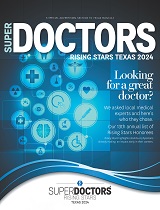MGH Center For Women's Mental Health (
MGH)
April 15, 2015
It is now widely accepted that there is an increased risk for depression among the children of mothers who suffer from depression. Exactly how this vulnerability to depression is transmitted to the child is not precisely understood and is undoubtedly quite complicated. Genetic factors clearly play an important role, but there are other important factors which contribute to the transgenerational transmission of depression. For example, many studies have shown that maternal depression may contribute to parenting styles which increase a child's likelihood of developing depression later on.
There is also considerable evidence to indicate that what happens in utero, while the fetus is developing, may predispose a child to certain illnesses later on in life. This concept of fetal programming is gaining traction and has been used to explain susceptibility to cardiovascular disease, obesity, and diabetes. There is less information regarding fetal programming when it comes to risk for psychiatric illness; however, it has been hypothesized that alterations of the maternal hypothalamic-pituitary-adrenal (HPA) axis may influence the development of the fetal HPA axis. When dysregulation of the maternal HPA axis occurs - as a result of exposure to stressful life events or the experience of anxiety or depressive symptoms during pregnancy - the baby is exposed to higher levels of cortisol and this may lead to long-standing alterations in the fetal HPA axis, making the child more susceptible to depression or anxiety as an adult.
Researchers speculate that high cortisol levels may also alter the development of the fetal brain. Several recent studies have focused on the development of the amygdala. The amygdala is the part of the brain that helps to modulate stress reactivity and vulnerability to mood disorders. Various studies using structural magnetic resonance imaging (MRI) have demonstrated that the amygdala is increased in size in adolescents and adults diagnosed with major depressive disorder. In addition, functional MRI studies have demonstrated hyperactivation of the amygdala in subjects with major depression. In the context of fetal programming, the amygdala has received special attention because the amygdala develops at an early embryonic stage and its development appears to be particularly sensitive to elevated levels of cortisol, which is the end-product of a dysregulated HPA axis.
A few years ago, Buss and colleagues measured cortisol levels during pregnancy in a group of 65 normal, healthy mothers and examined the association between maternal cortisol levels in early, mid-, and late gestation and measures of amygdala and hippocampus volume in their children at seven years of age. Higher maternal cortisol levels in early (but not later) pregnancy were associated with larger right amygdala volume in girls but not in boys. Moreover, higher maternal cortisol levels in early pregnancy were also associated with more affective problems in girls, and this association was mediated, in part, by amygdala volume.
In another study, Rifkin-Grabbi and colleagues recruited 157 mothers at 10 to 13 weeks of pregnancy and assessed maternal depressive symptoms at 26 weeks of gestation using the Edinburgh Postnatal Depression Scale (EPDS). Structural MRI was performed on the newborns between 6 and 14 days. Comparing infants born to women with higher levels of depressive symptoms versus those born to mothers with no or low levels of depressive symptoms, the authors did not find any differences in amygdala size but they did find more subtle changes in the microstructure of the right amygdala.
These findings suggest that the mother's depression may affect the structure and organization of the fetal brain, particularly the development of the amygdala, the region of the brain which modulates vulnerability to mood and anxiety disorders. While this type of research is still in its infancy, it provides us with another mechanism for the transgenerational transmission of depression. We have focused in many other research studies on genetic contributions and the quality of the mother-child relationship; however, this study indicates that the fetal environment is vitally important and that risk may be transmitted from mother to child during fetal life.
Ruta Nonacs, MD PhD
Buss C, Davis EP, Shahbaba B, Pruessner JC, Head K, Sandman CA. Maternal cortisol over the course of pregnancy and subsequent child amygdala and hippocampus volumes and affective problems. Proc Natl Acad Sci USA 2012; 109: E1312-E1319.
Pawlby S, Hay DF, Sharp D, Waters CS, O'Keane V. Antenatal depression predicts depression in adolescent offspring: prospective longitudinal community-based study. J Affect Disord 2009; 113: 236-243.
Pearson RM, Evans J, Kounali D, Lewis G, Heron J, Ramchandani PG et al. Maternal depression during pregnancy and the postnatal period: risks and possible mechanisms for offspring depression at age 18 years. JAMA Psychiatry 2013; 70: 1312-1319.
Rifkin-Graboi A, Bai J, Chen H, et al. Prenatal maternal depression associates with microstructure of right amygdala in neonates at birth. Biol Psychiatry. 2013 Dec 1; 74(11):837-44.

